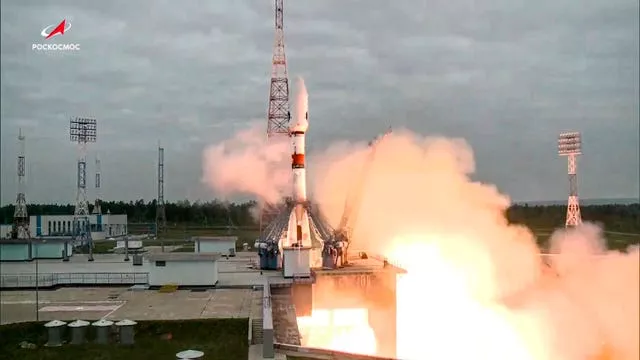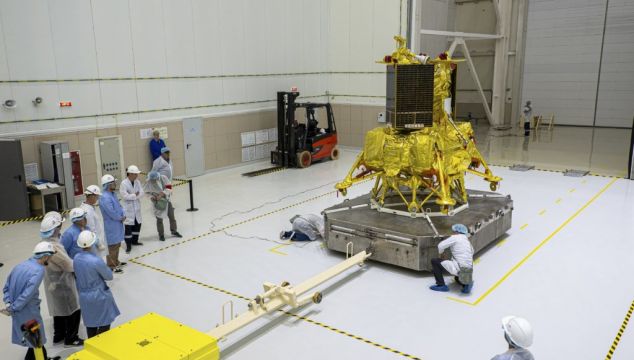Russia’s robot lander the Luna-25 spacecraft has crashed into the moon after it had spun into uncontrolled orbit, the country’s space agency Roscosmos reported.
“The apparatus moved into an unpredictable orbit and ceased to exist as a result of a collision with the surface of the moon,” read a statement from the agency.
Roscosmos said it lost contact with the spacecraft on Saturday after it ran into trouble while preparing for its pre-landing orbit after reporting an “abnormal situation ” that its specialists were analysing.
“During the operation, an abnormal situation occurred on board the automatic station, which did not allow the manoeuvre to be performed with the specified parameters,” Roscosmos said in a Telegram post.

The spacecraft was scheduled to land on the south pole of the moon on Monday.
The lunar south pole is of particular interest to scientists, who believe the permanently shadowed polar craters may contain frozen water in the rocks that future explorers could transform into air and rocket fuel.
The Russian lunar lander was racing to land on Earth’s satellite ahead of an Indian spacecraft, launched on July 14. Both were expected to reach the moon between August 21 and 23.
Only three governments have managed successful moon landings: the Soviet Union, the United States and China, but not on the moon’s south pole. India and Russia have been racing to be the first countries to land there.
A previous Indian attempt to land at the moon’s south pole in 2019 ended when the lander crashed into the moon’s surface.

Roscosmos said it wanted to show Russia “is a state capable of delivering a payload to the moon” and “ensure Russia’s guaranteed access to the moon’s surface”.
Sanctions imposed on Russia since it began its actions in Ukraine make it harder for the country to access Western technology, impacting its space programme.
The Luna-25 was initially meant to carry a small moon rover but that idea was abandoned to reduce the weight of the craft for improved reliability, analysts said.
The Luna-25 launched from the Vostochny Cosmodrome in Russia on August 10. The spaceport is a pet project of Russian President Vladimir Putin and key to his efforts to make Russia a space superpower.
The launch earlier this month was Russia’s first since 1976 when it was part of the Soviet Union.
Vitaly Egorov, a Russian space analyst, said despite the crash the mission had some successes.
“Luna 25 showed important progress. It flew toward the moon, carried out orbit correction, and tested onboard electronics and scientific tools,” he said.
“It even managed to collect some small scientific data during the flight and from the lunar orbit. It also sent photos of the moon.
“Russian cosmonautics was not at this level before. But then, an error occurred somehow.”







